Newborn photography is a special art and while most of the newborns that come to my Aliso Viejo based studio are between 2 and 4 weeks of age, it is not unusual for me to photograph “older” newborns. Having specialized in newborns and babies now for over 15 years I have found that it is better to schedule newborn sessions around the new mom’s recovery. Some moms bounce back quickly and want to get in asap, but some mom’s need a bit more time. This can be due to physical recovery or mental recovery. Maybe their baby came early and they just don’t feel prepared, maybe they have other children and the scheduling is overwhelming. Whatever the reason, it’s ok. I’m here to tell you that you are not too late and to give some pointers to you. and to other photographers faced with photographing a newborn between 4 to 10 weeks of age.
Baby Ryan (below) was 9.5 weeks old at her session.
1. Be Prepared for Less Sleepy Time
Theare often a little more alert, However, while you might not get baby quite as sleepy or curly, these older newborn sessions have their own unique charm, with more expressive faces and eye contact. Plus if you are patient, they too will usually dose off and you will be able to get some sleepy posed newborn photos.
At this stage, newborns are starting to become more awake and alert. They usually have more control over their bodies, be more aware of their surroundings and less likely to sleep soundly for long periods. It’s all in the approach.
Tip: Be patient and flexible. If the baby is awake, embrace it! It is a great time to capture stunning photos of them gazing directly into the camera. I like to have a few props and setups ready that allow for both sleeping and awake shots.
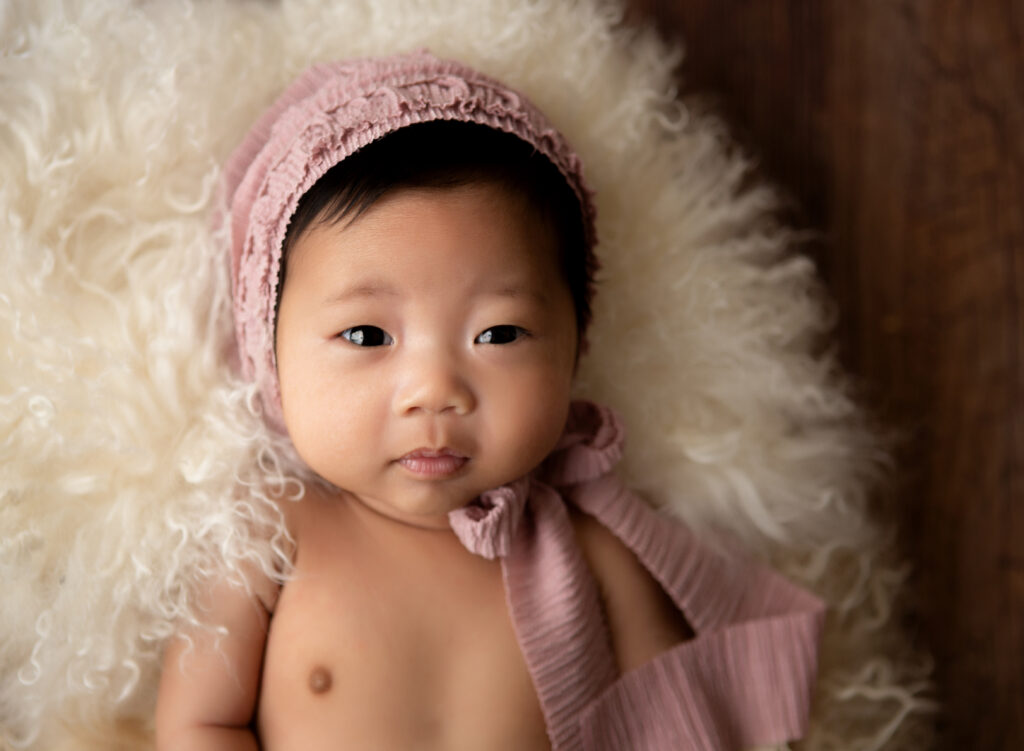
2. Go with simple backdrops
You want the focus to be on the baby, not on elaborate props or distracting backgrounds. I love neutral drops and textures, but it can also be fun to add a little color.
Tip: Choose solid backdrops and add textures for variety. I love to use shades of whites for all babies, as they create a timeless, classic look. Use furs, knits and other textures to hide posing pillows or to add subtle interest without taking away from the baby’s natural beauty. When using colors I like to stick to monochromatic sets for the same reasons.
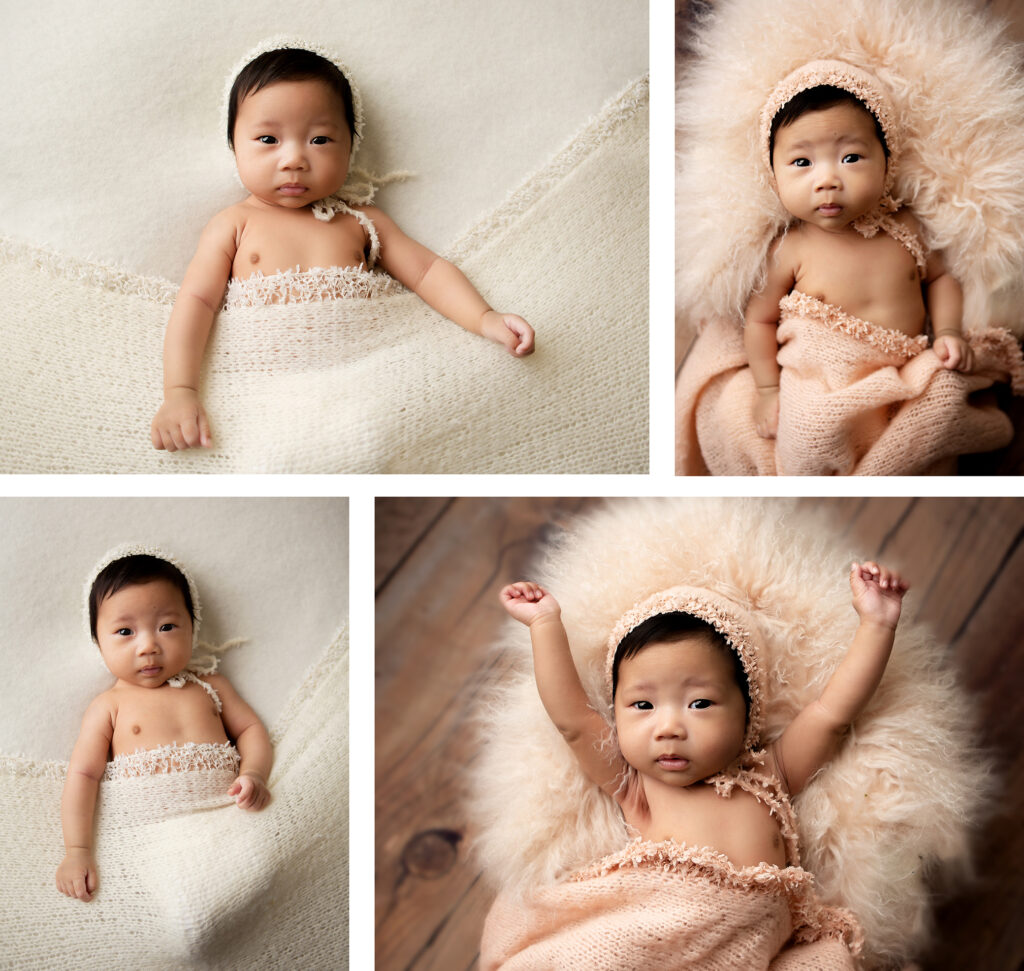
3. Engage with the Baby
One of the biggest differences when photographing older newborns is that they’re more alert and responsive. They might follow sounds, voices, and movements with their eyes, giving you the perfect opportunity to capture those first signs of connection with the world.
Tip: Make eye contact with the baby, talk softly, or even make funny faces to get them to engage with you. This is a great time to get some gorgeous eye contact and you might even get lucky and get some precious baby smiles.
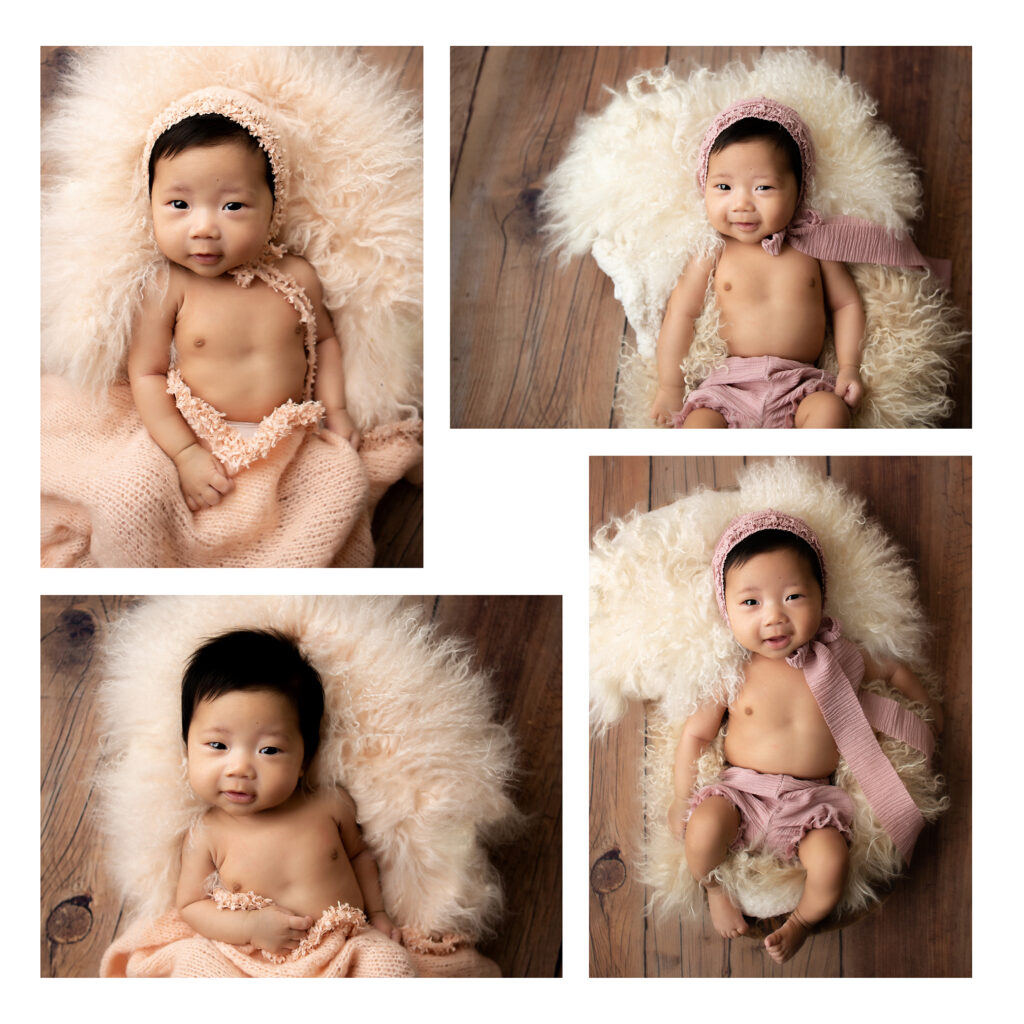
4. Use Comfortable and Natural Poses
Unlike newborns in the first few weeks who can be posed more easily due to their flexibility, older babies are stronger and may not tolerate certain poses for long periods. As babies gain more control over their muscles, they may not want to stay curled up in the typical “newborn pose” as easily.
Tip: I like to begin with a focus on relaxed, natural poses that show off the baby’s personality. If the baby is awake, I will place them on a soft blanket or a cozy setup where they can comfortably stretch out. This is a great time for capturing “personality portraits” or “baby mugs” also.
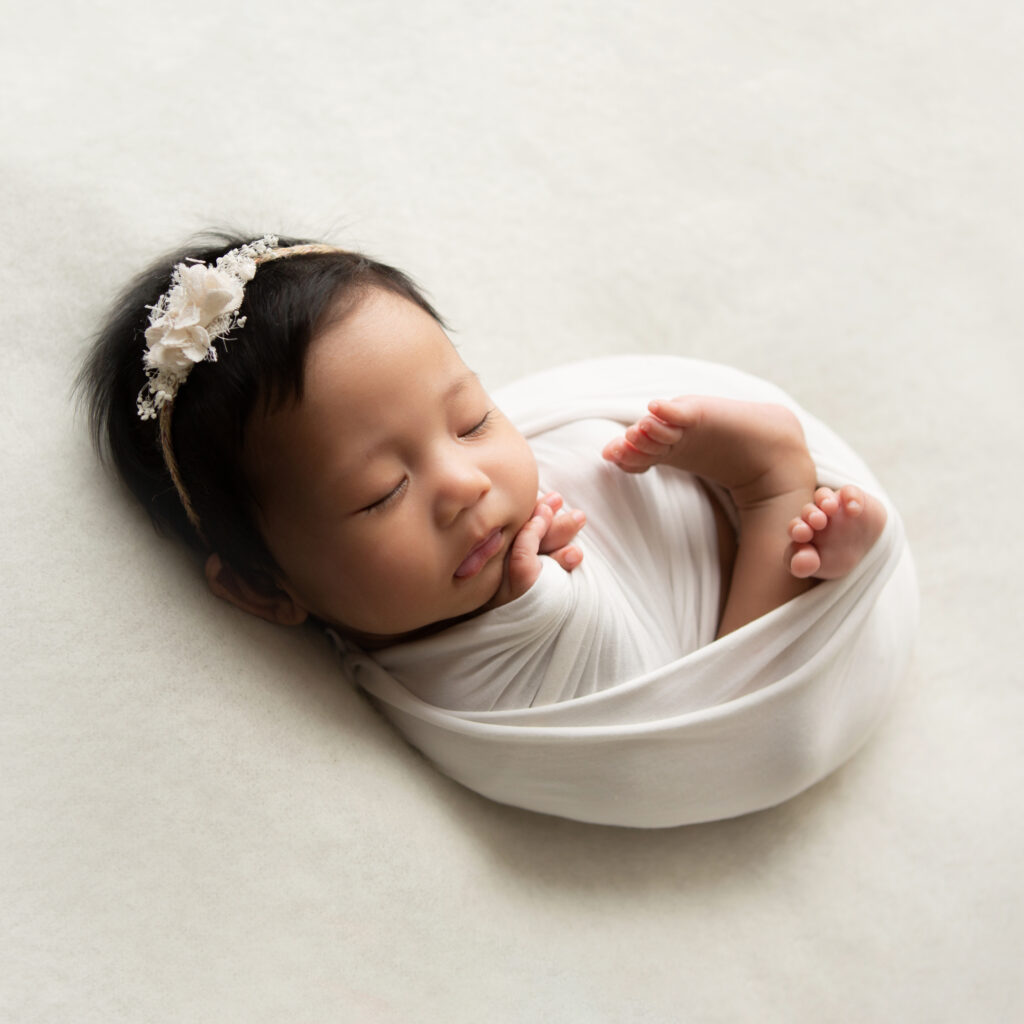
5. Try swaddling when they show signs of getting sleepy
While older newborns are often more awake and alert during their photo sessions, they still spend a significant amount of time sleeping. Be on the watch for baby sleepy signs – rubbing their eyes, fussing, waving their arms around, etc.
Tip: I like to keep the studio warm and cozy with soothing sounds that encourage the baby to settle. When the baby begins to show signs of getting sleepy (eye rubbing, fussing, etc) this is a great time to begin preparing. I like to have my posing pillows in place for table poses and a couple of props set up ready. Most baby will still allow me to swaddle them at this age, which often helps them get into a deep sleep. I like to start with some swaddled poses and save the table poses for last.
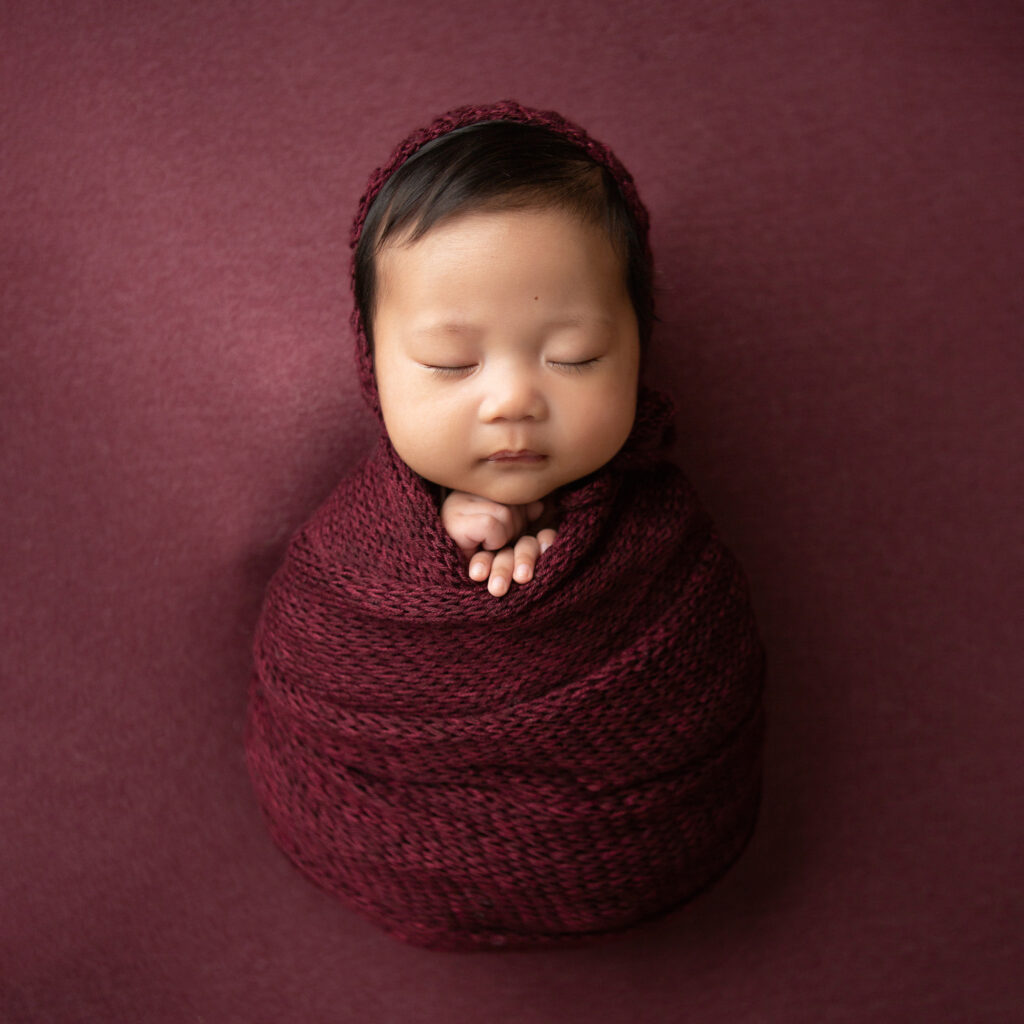

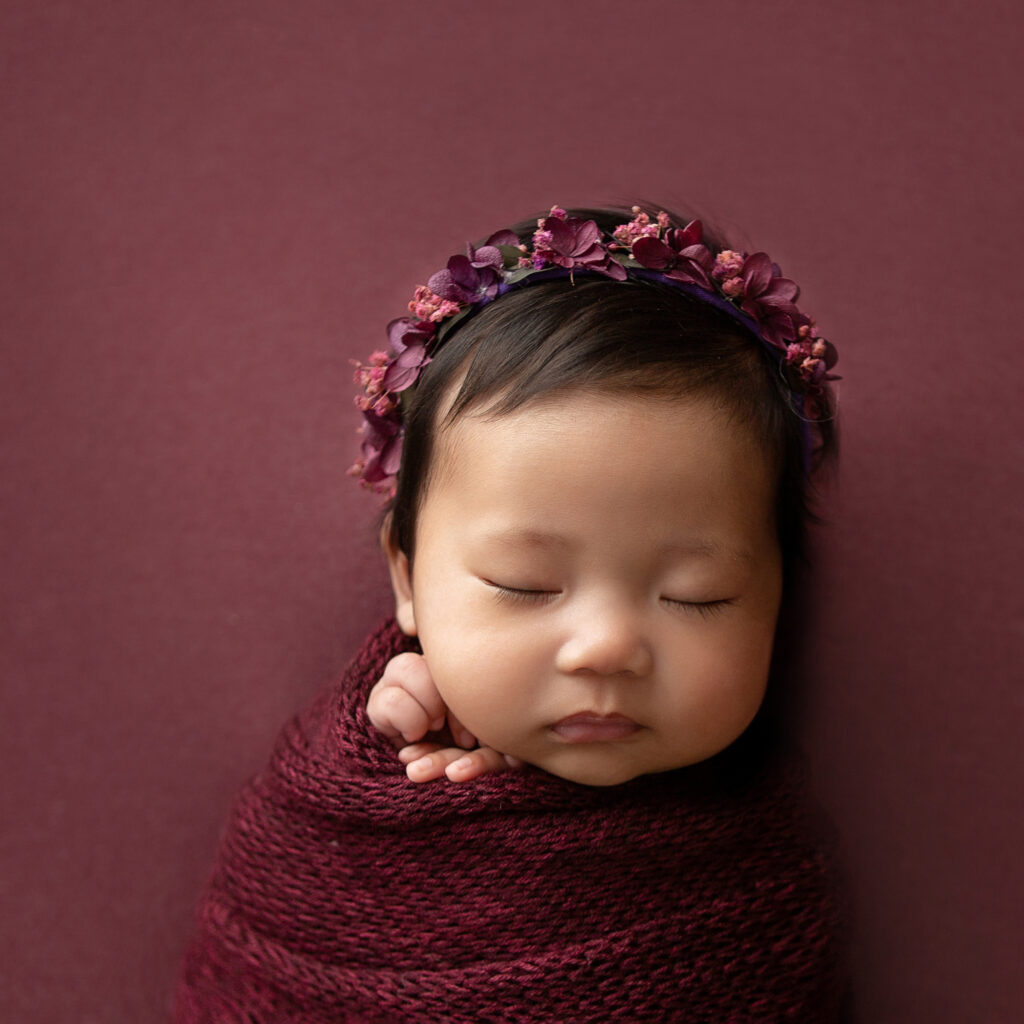
5. Work fast and take progression shots just in case they abort mission
Once older newborns are sleeping you generally have less time to mess about. You want to unwrap them and pose them pretty quickly, making only a few minor adjustments.
Tip: Stick to poses that have a pretty fluid transition into the next pose. You will likely only have time for a couple of poses, before the cat nap is over 🙂 Ryan here is in the process of waking during these images. She had her pacifier and was fluctuating between opening her eyes and letting them close. I have the same pose both with her eyes open and closed.
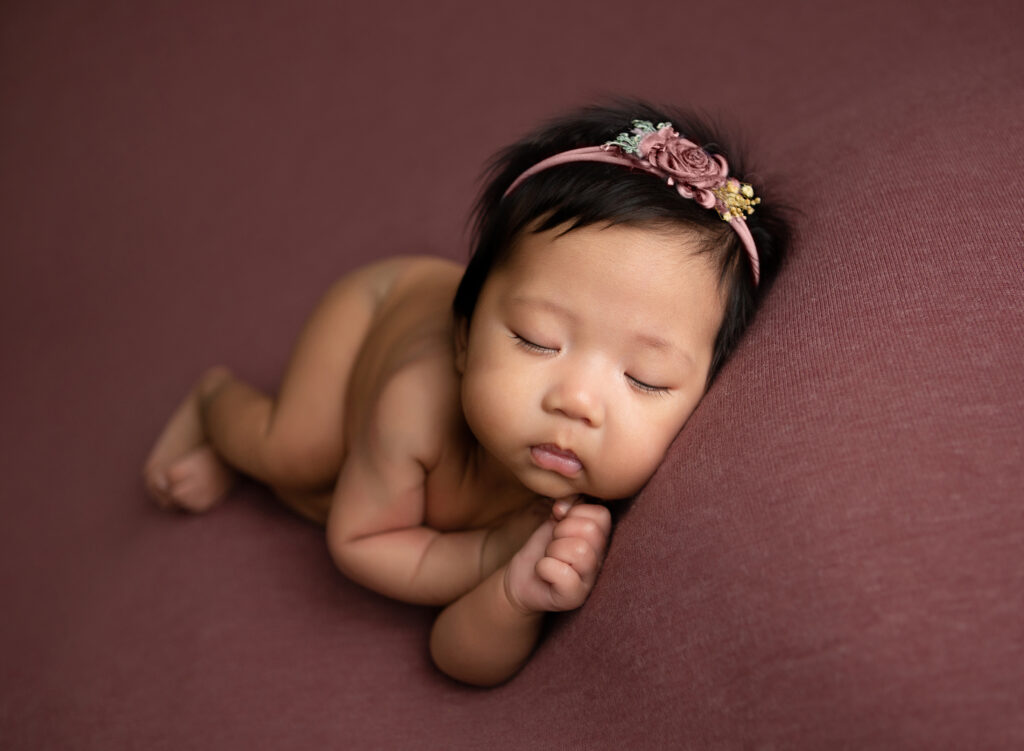
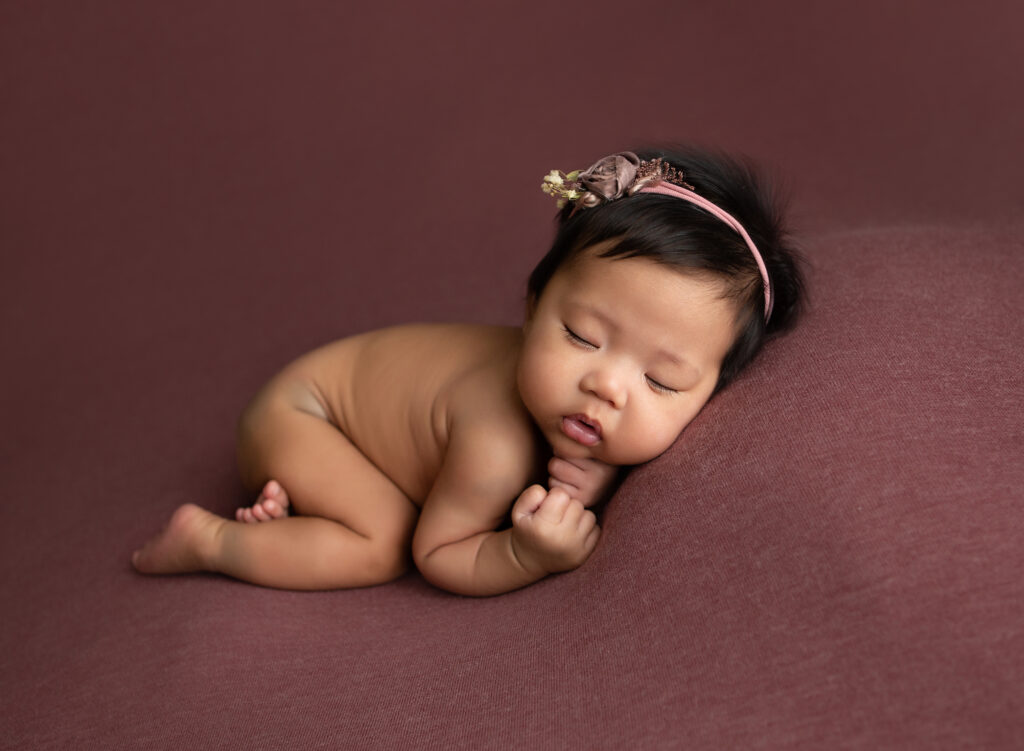
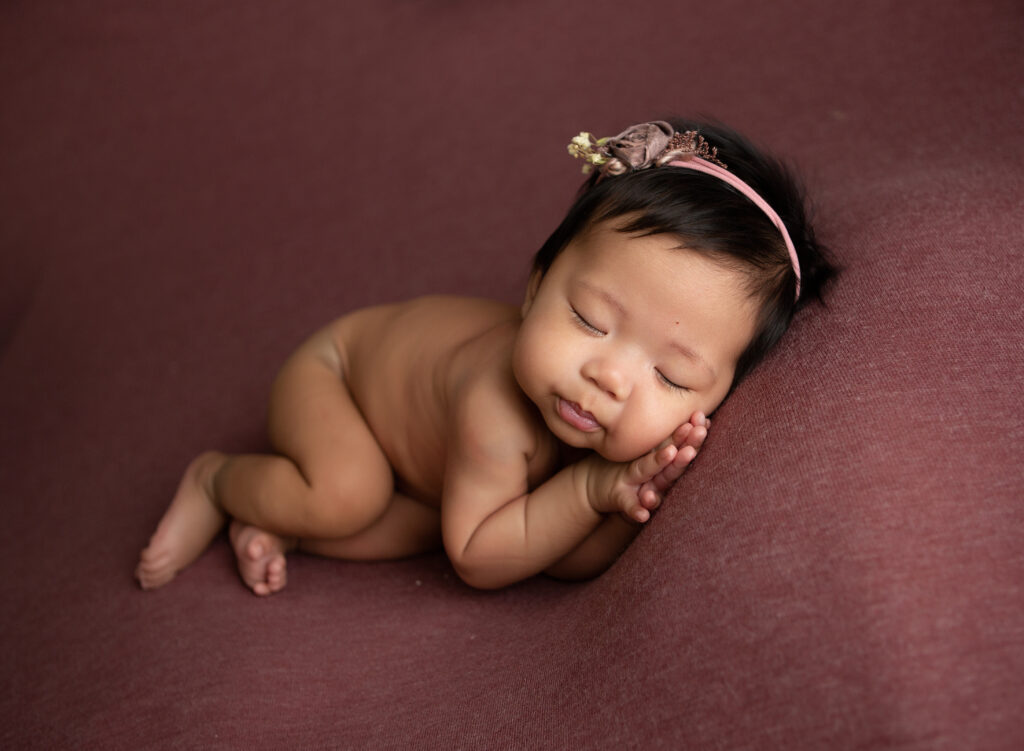
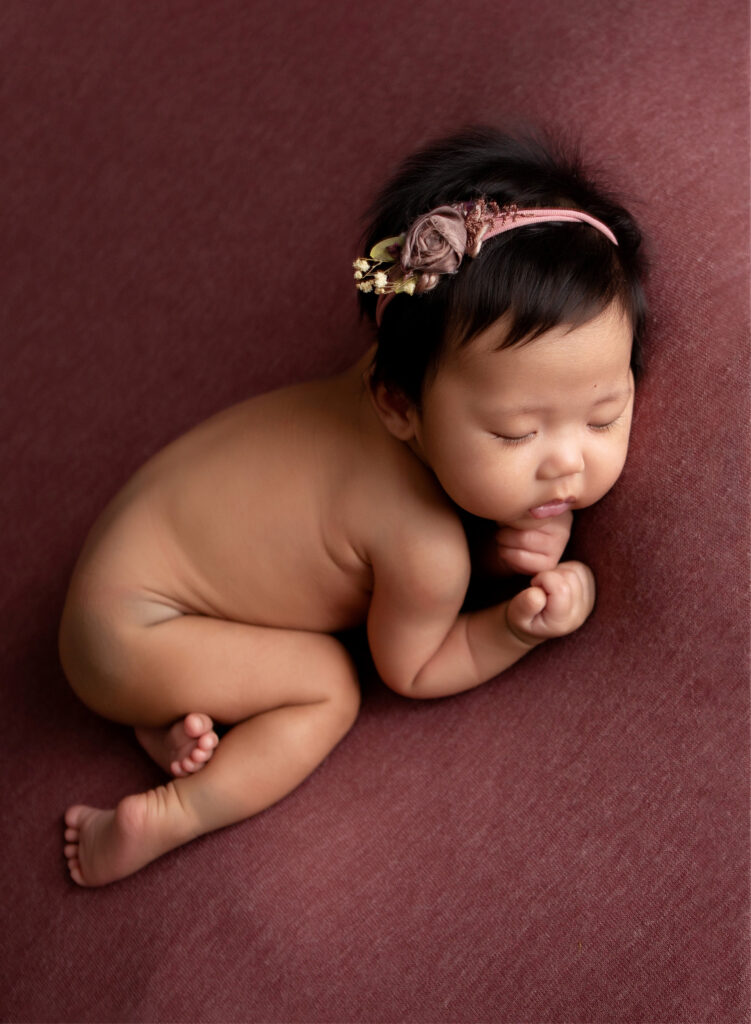
Be the first to comment